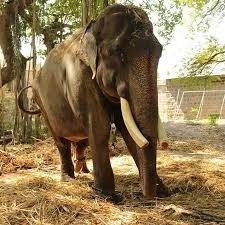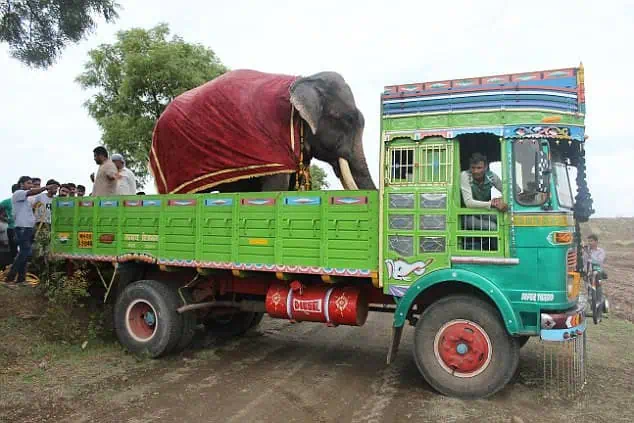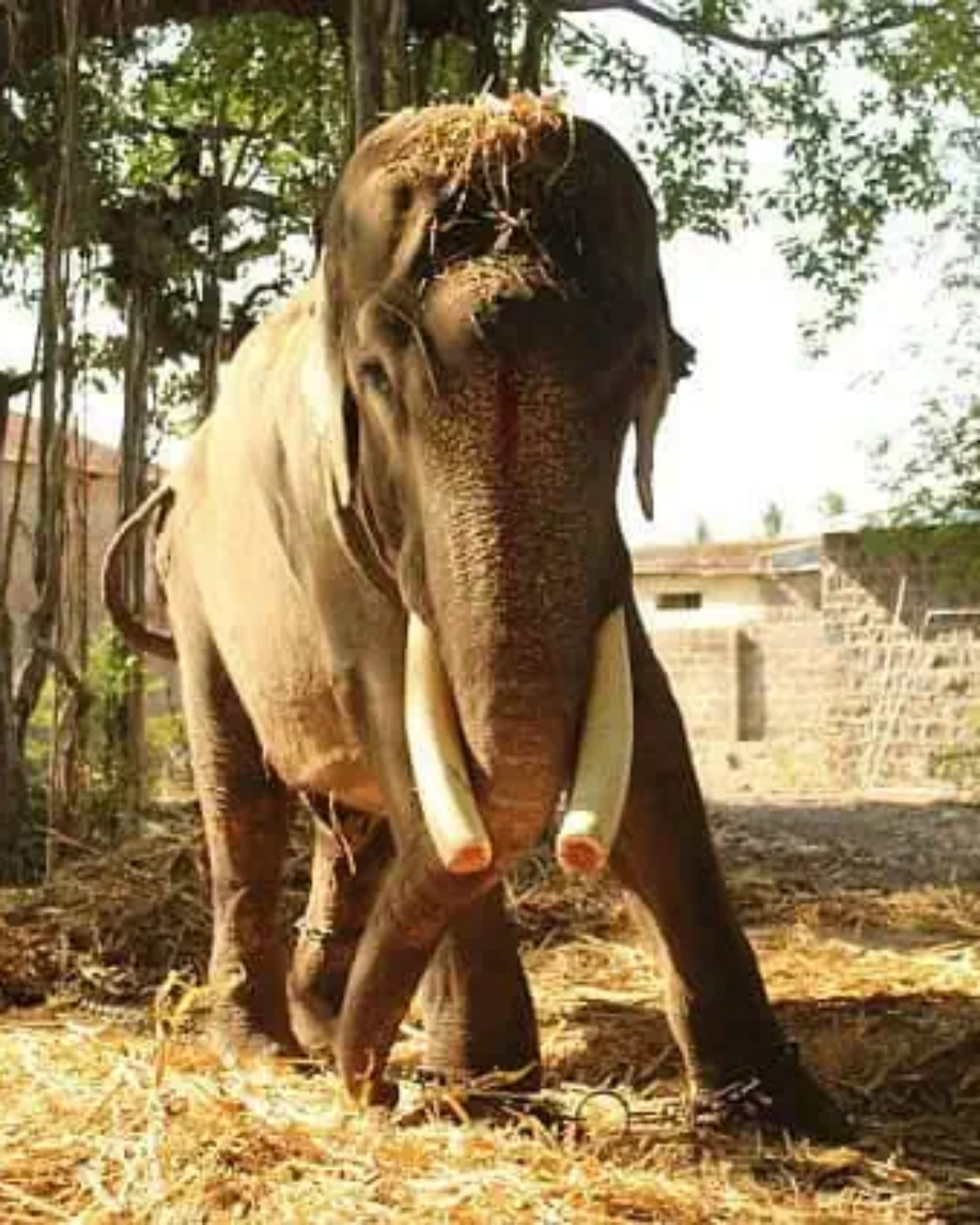This is one of the most heartbreaking stories you will ever read about animals. For nearly 60 years, Gajraj the elephant, whose name means ‘king,’ lived a life that was the opposite of royal. Chained day and night at a temple in India, seen by villagers as a sacred offering, his immense suffering was hidden in plain sight. His rescue, after almost six decades of misery, is a powerful testament to hope, but also a shocking reminder of a hidden crisis.
A Life of Agony
Gajraj the elephant was stolen from the wild as just a baby. His life since then had been one of constant pain and neglect. His captors sawed off his majestic tusks. His legs were covered in deep, painful scars from the heavy chains that never came off, digging into his flesh year after year. His skin sagged, and chronic foot infections left him in constant agony. Yet, for 58 years, he stood there – bound, obedient, and slowly dying inside.
When rescuers from Wildlife SOS, supported by PETA India, finally arrived to give him a second chance at life, they weren’t met with relief. They were met with rage.
Hundreds of villagers gathered, furious that their ‘sacred’ elephant was being taken. They threw stones and blocked the road, unable or unwilling to see the suffering behind the symbol. To them, Gajraj wasn’t a victim; he was their tradition.

The Long Road to Freedom
The rescue team refused to give up. With police protection, they worked for hours, patiently calming the terrified, confused Gajraj the elephant. He was hesitant – after a life defined only by chains and pain, how could he trust these strangers offering freedom?
Slowly, step by agonizing step, he finally lifted his wounded legs onto the ramp of the rescue truck. His 930-mile journey to a new life had begun.
Read More: The Hidden Meaning Behind Princess Diana’s Cannes Gown: A Heartfelt Farewell to Grace Kelly
During the long trip, rescuers treated his painful abscesses, fed him sweet sugarcane and watermelon, and spoke softly to him. They offered him the kindness he had likely never known.
When he finally arrived at the Wildlife SOS elephant sanctuary, the most incredible moment happened. The chains – the heavy, cruel chains that had bound him for 58 years – were cut off.
For the first time since he was a baby, Gajraj the elephant stood free. He took cautious steps, feeling soft earth beneath his wounded feet instead of hard concrete. There were no crowds, no drums, no commands. Only peace.

Redemption, Not Just Rescue
Today, Gajraj is spending his final years surrounded by care. Veterinarians tend to his wounds, keepers bring him his favorite foods, and he can finally wander, bathe in cool water, and rest in the shade whenever he wants. It’s not just a rescue; it’s redemption for a life stolen.
But Gajraj’s story is just one of many heartbreaking stories. Across India, hundreds of other ‘temple elephants’ still live in chains, their sacred status used as an excuse for unimaginable cruelty. Filmmaker Sangita Iyer, who exposed this crisis in Gods in Shackles, said it best: “As a Hindu, I’m ashamed. We call them sacred, but what we do to them is anything but holy.”
Gajraj the elephant‘s freedom is a powerful symbol. It reminds us that reverence means nothing without mercy. No living being, no matter how sacred, deserves a life in chains.
Full Story: Man Loses 360 Pounds Naturally, Internet Rallies to Support His Next Step


